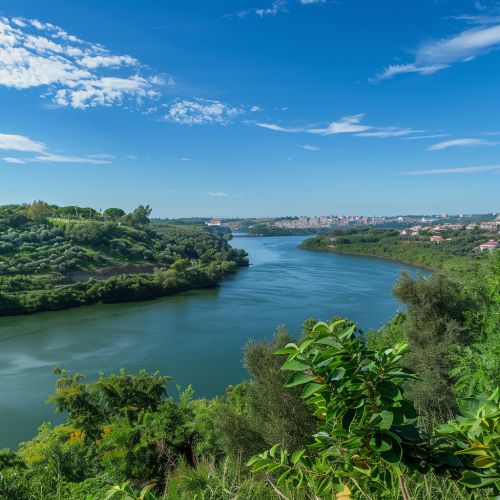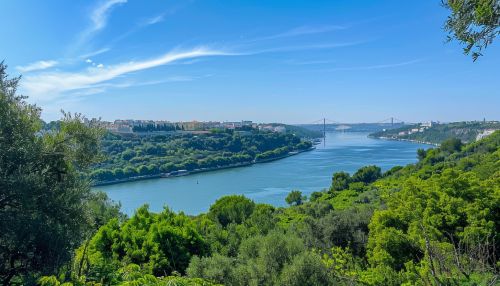Tagus
Geography
The Tagus is the longest river on the Iberian Peninsula, spanning 1,007 kilometers. It originates in the Montes Universales in the eastern part of Spain, flowing westward across Spain and Portugal before emptying into the Atlantic Ocean near Lisbon. The river's basin covers an area of approximately 80,100 square kilometers, making it the most extensive river basin in the Iberian Peninsula.


Hydrology
The Tagus River has a highly irregular flow due to the diverse climatic conditions in its basin. The river's flow is influenced by the Atlantic and Mediterranean climates, with the former dominating the lower basin and the latter the upper basin. The river's flow is also affected by the Ebro, Guadiana, and Júcar rivers, which are its main tributaries. The Tagus River's flow is further regulated by several dams and reservoirs, including the Almendra Dam, Valdecañas Reservoir, and Buendía Reservoir.
Flora and Fauna
The Tagus River basin is home to a diverse range of flora and fauna. The river's banks are lined with a variety of plant species, including black poplar, white willow, and common reed. The river is also home to numerous fish species, such as the Iberian barbel, European eel, and carp. The river's basin is also a habitat for a variety of bird species, including the Black stork, Western marsh harrier, and Common kingfisher.
Human Interaction
The Tagus River has played a significant role in human history, serving as a vital waterway for trade and transportation. The river's basin has been inhabited since prehistoric times, with archaeological evidence of human settlements dating back to the Neolithic period. The river was also of strategic importance during the Roman Empire, with several Roman cities, including Toledo and Lisbon, being located along its banks. The river continues to be of economic importance today, with its waters being used for irrigation, hydroelectric power generation, and as a source of drinking water.
Environmental Issues
The Tagus River faces several environmental challenges, including pollution, habitat destruction, and the impact of climate change. The river's waters are polluted by industrial effluents, agricultural runoff, and domestic sewage. The construction of dams and reservoirs has also led to the loss of riparian habitats and the fragmentation of aquatic ecosystems. Climate change poses a further threat to the river's health, with rising temperatures and changing precipitation patterns expected to alter the river's flow and impact its biodiversity.
